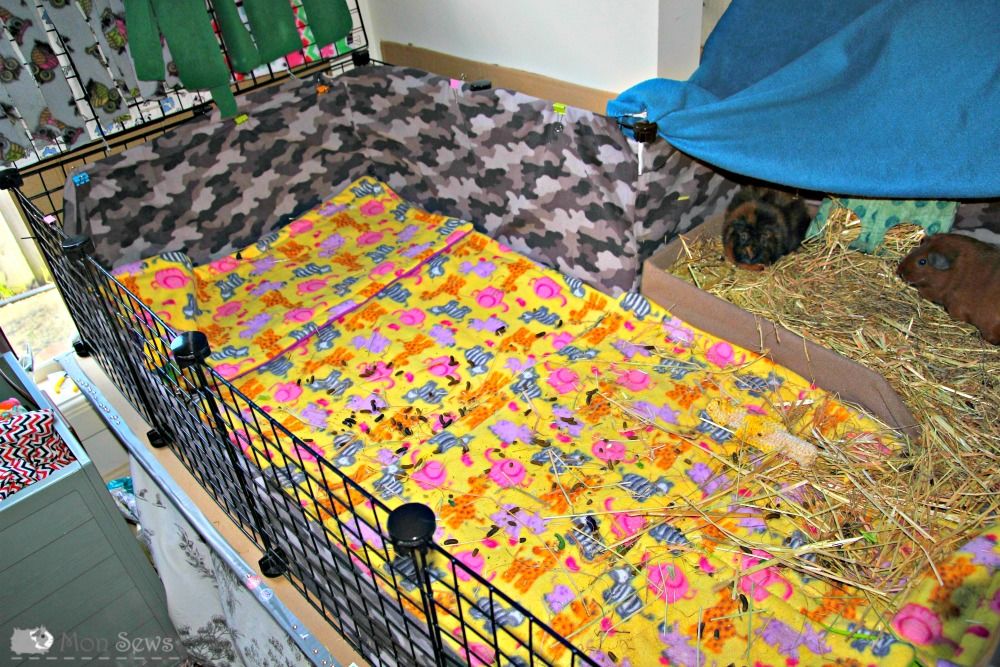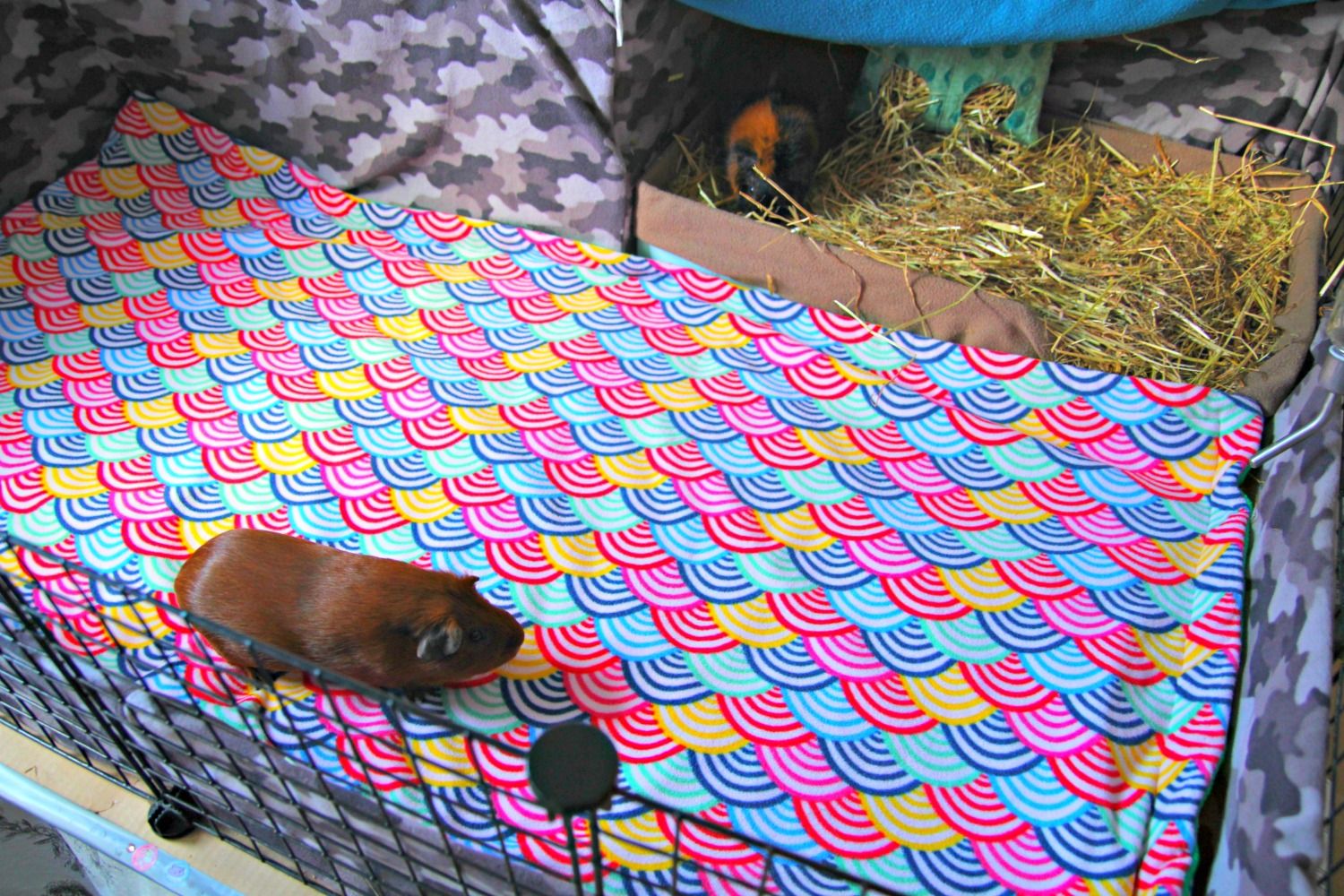All accessories must be washed before it can be used in your guinea pig cage. They are machine washable and dryer friendly on low to medium heat. Please refrain from using fabric softeners and dryer sheets.
What to do with your new fleece cage liners and pads.
Cage liners and pads are made to absorb moisture because they contain 2 layers of fleece, 1 absorbent layer and a water resistant layer. Every fleece is manufactured with a protective waterproof barrier that prevent moisture from seeping through. You must wash it to break down the barrier to allow moisture to wick/absorb through to the absorbent layer, so the fleece on top should be dry.
My fleece doesn’t wick!
Are you testing it with warm water?
Cold water will wick more slowly, but pee is always warm 😉
Washing Instructions for new cage liners and pads
- Place your new liners and pads in your washing machine
- Add your detergent. I always use 1/4 to 1/2 of the required laundry detergent recommended amount.
- It may take 2 or 5 washes to wash off the barrier and get the wicking working.
- Test your liner. Drop a few drops of water on it. If the water gets wicked/absorbed into the fleece. Congratulations, your liner/pad is ready to be use.
- If it still pools on the fleece, just wash it again.
Remember to always use the liners and pads pattern side up. Please refrain from using fabric softeners and dryer sheets. It will bring back the protective barrier again.
General Instructions
- Spot clean the cage everyday for debris like; poop, stray hay or even leftover food.
- I use a small broom and dustpan, pail and spoon or vacuum cleaner (remember to keep your guinea pig safe.)
- I use smaller pads on high traffic areas where they love to hide or sleep. This helps keep the cage cleaner longer.
- A more comprehensive whole cage clean up at least once a week.
Fluffy Fleece Accessories such as huts, cuddle beds
- They are machine washable and dryer friendly on low to medium heat. Please refrain from using fabric softeners and dryer sheets.
- Remove from washer machine as soon as possible.
- Reshape them before letting them dry.
The once a week clean up
- Remove all accessories from cage.

- They both know what is happening, so they have migrated to the hay kitchen. If you are new with guinea pigs, I suggest putting them in a safe temp cage. Don’t be deceived by the quantity of poops. There are less poops because they hang out mostly in their hay kitchen.
2. Remove the fleece liners. I roll mine carefully to contain the debris.

3. Disinfect and clean the corflute surface. You can use a mixture of 50/50 vinegar and water in a spray bottle. Spray and wipe.
4. Place clean cage liners, pads and accessories back in the cage. Decorate all you want. Watch your guinea pig popcorn in joy because their cage is clean and there are clean accessories to play with.

Ace is doing a cage inspection

Happily munching hay in their freshly cleaned cage
5. Now that the guinea pigs are happy, it is time to continue cleaning up. Remove all debris from the soiled accessories (I usually give it a nice shake outside and brush it with a silicone dog mitt). I’ve heard good reviews on using a window squeegee and horse brush.
6. Washing machine or hand wash with no enzyme detergent. Do not use softener. I know of people who washes the fleece items in a fine mesh laundry bag/pet laundry bag or a cheap single quilt cover from Kmart.
7. Dry the fleece accessories.
I always line dry my fleece accessories. The sun helps dry and kills the germs, hence the laundry always smells better. (I learnt that from using modern cloth nappies with the kids and also I do not own a dryer). It also saves energy cost and the environment.
Dryer friendly on low to medium heat because higher temperature may shorten the lifespan of your fleece accessories.
